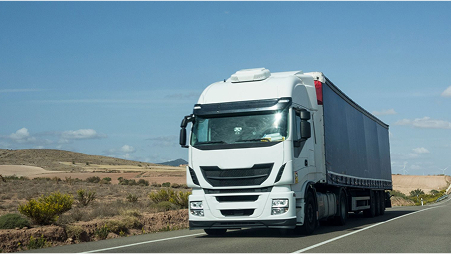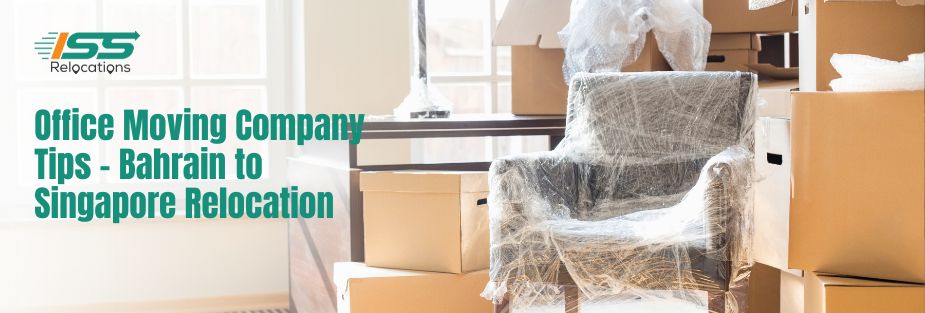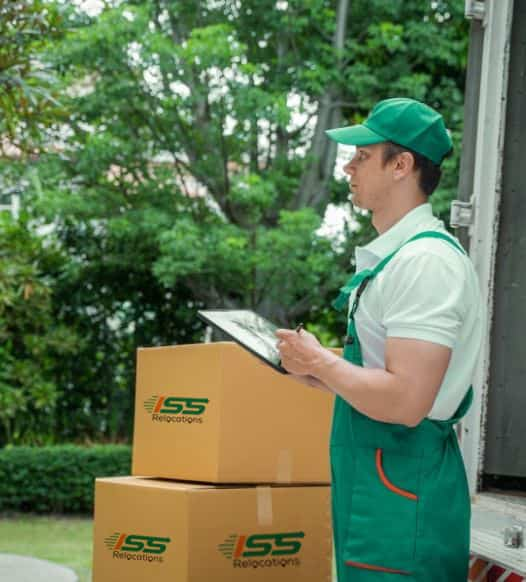
How to Pack Your Belongings for a Local Move: Tips and Tricks
Moving to a new location can be an exciting adventure, but the process of packing up your belongings can be stressful and overwhelming. Packing your items properly is important for ensuring that they arrive at your new home safely and in good condition. If you are planning a local move, you may be wondering how to pack your belongings to ensure they stay safe during the move. This blog post will provide you with tips and tricks for packing your belongings for a local move.
Section 1: Preparation
The key to a successful move is planning ahead. Before you start packing your belongings, make a checklist of everything you need to do to prepare for the move. This includes decluttering your home and getting rid of any unnecessary items. You can donate, sell or dispose of items that you no longer need or use. This will make packing easier and ensure that you do not waste time and money packing items that you do not need.
Once you have decluttered your home, start stocking up on packing supplies such as boxes, tape, bubble wrap, and packing paper. You can purchase these supplies from your local hardware store or order them online. Make sure to get a variety of box sizes to accommodate all your items. You can also get wardrobe boxes for your clothes and other hanging items. Having the right packing supplies will make the process of packing easier and more efficient.
Another important consideration when preparing for a local move is securing any necessary permits or parking arrangements for the move. This is especially important if you live in an apartment or condominium building with restricted access or if you have a large moving truck. You should contact your building management or the city ahead of time to make sure you have the necessary permits and parking arrangements for your move.
Section 2: Packing Techniques
When it comes to packing for a local move, it’s important to consider the type of items you’re packing and the best way to protect them during transport. Here are some packing techniques to help you pack your belongings safely and efficiently:
- Fragile items: When packing fragile items such as dishes, glasses, and electronics, it’s important to use plenty of padding and protection. Start by wrapping each item individually with packing paper or bubble wrap, and place them in a sturdy box with plenty of packing material to prevent them from shifting during transport. Mark the box as “fragile” and avoid stacking heavy items on top of it.
- Clothing, shoes, and accessories: Clothing, shoes, and accessories can take up a lot of space in boxes, so it’s important to maximize space and minimize weight. Use vacuum-sealed bags to compress clothing and linens, and pack shoes and accessories in the gaps between items to save space. Label boxes clearly to make unpacking easier.
- Bulky or oddly shaped items: When packing bulky or oddly shaped items like furniture and lamps, it’s important to disassemble them, if possible, to make them easier to pack and transport. Use plenty of padding and protection, such as blankets or bubble wrap, to prevent scratches and damage. For larger items, consider using moving straps or dollies to make them easier to lift and transport.
- Maximizing space and minimizing weight: When packing boxes, it’s important to maximize space and minimize weight to make them easier to lift and transport. Use smaller boxes for heavy items and larger boxes for lighter items, and fill empty spaces with packing material to prevent items from shifting during transport.
- Labelling boxes: Labelling boxes clearly and consistently is essential for a successful move. Use a permanent marker to write the contents of each box and the room it belongs in, and label boxes as “fragile” or “heavy” as needed. This will make it easier to unpack and organize your belongings in your new home.
By using these packing techniques, you can ensure that your belongings are packed safely and efficiently for your local move. It’s also important to stock up on packing supplies such as boxes, tape, bubble wrap, and packing paper to make the process easier. With a little planning and preparation, you can make your move stress-free and successful.
Section 3: Moving Day
On moving day, it is important to take extra precautions to ensure that your belongings stay safe during the move. When loading boxes onto a moving truck or vehicle, make sure to stack them evenly and securely to prevent shifting or falling. Use straps or ropes to secure large items like furniture and appliances.
Guidelines for moving heavy or awkward items safely include using proper lifting techniques and having the right equipment, such as a dolly or hand truck. If you are not comfortable moving heavy items on your own, consider hiring professional movers to help you.
Once you arrive at your new home, take your time unpacking and organizing your belongings. You should also address any damage or issues that may have arisen during the move. If you notice any damage to your items or property, make sure to document it and contact your moving company or insurance provider as soon as possible.
Section 4: Special Considerations
Moving with pets or small children can be challenging, but there are strategies you can use to make the process smoother. For pets, it is important to keep them safe and comfortable during the move. Before the move, visit your veterinarian to ensure that your pet is up-to-date on all their vaccinations and medications. On moving day, keep your pet in a quiet, secure room or crate to reduce their stress and prevent them from escaping. Make sure to pack plenty of food, water, and toys for your pet during the move and make frequent stops to allow them to stretch their legs and use the bathroom.
When moving with small children, it is important to keep them occupied and engaged to reduce their stress and prevent them from getting in the way of the move. Pack a bag of toys, snacks, and activities to keep them entertained during the move. Make sure to have a plan for childcare on moving day, if necessary, as it can be difficult to supervise children and move at the same time.
For valuable items such as jewellery or artwork, it is important to take extra precautions during the move. Consider packing these items separately and transporting them yourself to ensure their safety. If you must pack them with other belongings, label the boxes clearly and pack them in a secure location in the moving truck or vehicle.
If you are moving with plants or other living things, it is important to consider their needs during the move. Some plants may not survive the move, so it may be best to give them away to friends or family members. For plants that are being moved, make sure to pack them securely and keep them in a temperature-controlled area during transport.
Lastly, it is important to address any specific concerns or requirements for the new location. This may include obtaining permits or parking arrangements for the move, familiarizing yourself with local regulations, or arranging for special accommodations for individuals with disabilities.
Conclusion:
In conclusion, proper packing is essential for a successful local move. Planning ahead, decluttering, and stocking up on packing supplies are all important steps to take before the move. Packing techniques such as packing fragile items, clothing, and bulky items should be taken into consideration as well. On moving day, loading boxes onto a moving truck or vehicle should be done with care and attention to prevent damage or injury. Special considerations such as moving with pets or small children, packing and moving valuable items, and moving plants or other living things should also be taken into account. At ISS Relocations, we understand the importance of hassle-free relocation services. Our team of experienced professionals is committed to ensuring that your belongings are relocated safely and efficiently, with zero damage. We offer a range of services to meet your specific needs, including packing, transportation, and unpacking services. With our expertise and attention to detail, you can be confident that your local move will be a success.
Plan Stress-free Move with Top Moving Company in UAE - ISS Relocations

Frequently Asked Questions
How do you pack for removalists?
When packing for removalists, ensure all items are securely packed with protective materials such as bubble wrap, packing paper, and sturdy boxes. ISS Relocations offers professional packing services, ensuring that your belongings are packed efficiently, safely, and ready for transport, making your local move in Dubai stress-free.
How to pack boxes for a move to Dubai?
To pack boxes for a move to Dubai, start by labeling them clearly, using strong boxes, and ensuring fragile items are well-protected. ISS Relocations offers expert packing services, helping you efficiently organize and secure your belongings for a smooth move to Dubai, ensuring that everything arrives in perfect condition.
How to pack for a house move in Dubai?
When packing for a house move in Dubai, begin by sorting through your items, packing non-essential things first, and using quality packing materials. ISS Relocations provides full-service packing, handling your items with care to ensure everything is safely packed and transported to your new home in Dubai.
What order should you pack for a move?
Start by packing non-essential items such as seasonal clothing and decor. Follow with items that are used less frequently, leaving essentials for last. ISS Relocations helps you efficiently pack your belongings in the right order, ensuring a smooth and organized move, with all items ready for transport on moving day.
When should I pack for moving house?
It’s best to start packing at least 1–2 weeks before moving day. Begin with items you don’t use often and gradually pack other belongings. ISS Relocations offers professional packing services to help you prepare for your move to Dubai, ensuring everything is packed securely and on time.
Do you have to pack for movers in UAE?
While it’s not mandatory to pack your items for movers in the UAE, it’s highly recommended to pack fragile and valuable items securely. ISS Relocations offers expert packing services, ensuring your belongings are packed safely and efficiently, making your local move in Dubai easy and hassle-free.
Should you start packing to move to Dubai?
Yes, it’s a good idea to start packing early to avoid last-minute stress. Begin by packing non-essential items and leave the essentials for later. ISS Relocations provides professional packing services, ensuring your belongings are safely and efficiently packed, so you can enjoy a smooth move to Dubai.
Moving Company - Recent Blog
Stay informed and prepared for your next move with our latest blogs on moving services in the UAE. From expert packing tips to international relocation guides, ISS Relocations brings you up-to-date insights to make your moving experience smoother, safer, and stress-free.










